“If fairies actually exist as invisible beings or intelligences, and our investigations lead us to the tentative hypothesis that they do, they are natural and not supernatural, for nothing which exists can be supernatural; and, therefore, it is our duty to examine the Celtic Fairy Races just as we examine any fact in the visible realm wherein we now live, whether it be a fact of chemistry, of physics or of biology.” WY Evans-Wentz, The Fairy-Faith in Celtic Countries
Walter Yeeling Evans-Wentz (1878-1965) was the sort of character who could only have thrived at the beginning of the 20th century. He’s probably best known these days for bringing the first translation of The Tibetan Book of the Dead (the Bardo Thodol) to the West. But prior to his travels in Tibet, Nepal and India, he was a self-styled American gentleman (i.e. independently funded) polymath, and between 1907-11 his incarnation was as a folklorist, who travelled around the Celtic bastions of Ireland, Brittany, Wales, Scotland, Cornwall and the Isle of Man, collecting, analysing and interpreting the ‘faerie faith’ in these places. His work was published as The Fairy-Faith in Celtic Countries in 1911, and it remains one of the most important testimonies of the belief in faeries amongst the Celtic peoples, collected at a time when for the majority of the rural population in these areas, faerieland was a bona-fide reality, to be revered and feared in equal measure.
His language can occasionally seem archaic and quaint, but there is no doubt that he imbued himself in the Celtic communities that he spent time with during his years of travels amongst them. He had the time, that a modern anthropologist/folklorist could only dream of, to visit these communities and spend time with them, soaking up their stories and anecdotes, which revealed so much about the deeply ingrained belief in the faeries and the way these entities interacted with consensual reality. In doing so, he gained a great admiration for the rural people he came across, who would tell it like it was.
“The great majority of men in cities are apt to pride themselves on their own exemption from ‘superstition,’ and to smile pityingly at the poor countrymen and countrywomen who believe in fairies. But when they do so they forget that, with all their own admirable progress in material invention, with all the far-reaching data of their acquired science, with all the vast extent of their commercial and economic conquests, they themselves have ceased to be natural… they have lost all sympathetic and responsive contact with Nature, because unconsciously they have thus permitted conventionality and unnaturalness to insulate them from it.”
This quote is from the introduction to The Fairy-Faith, and it sets out Evans-Wentz’s stall. He was on the side of the rural peasantry who were the repository of the vast wealth of folklore represented in their tales of the faeries. He recognised the innate importance of what they were conveying, and was not shy about convincing his reader of the authenticity of what they told him, even if it was anathema to the conventual scientific and materialistic wisdom of his age.

Evans-Wentz travelled on foot, visiting remote villages and farmsteads throughout the Celtic countries he visited, as often at night as by day, and would frequently take advantage of his hosts’ hospitality for days at a time, so as to hear as many stories as possible. He would take a local translator with him sometimes, as many of the informants spoke only their native Celtic language. The impression is gained of an extremely affable chap, who, by his own admission, gained the confidence of the countryfolk he visited by dint of being an American and not English! Those opening up to him with traditional stories were most often the oldest people of the communities, and whilst many of the stories were either contemporary or dating back to their youth, others were handed down to them from their parents and grandparents, taking the timeline back as far as the late 18th century. Some are first-hand accounts, whilst others are anecdotal, but there is a strong consistency in themes and motifs, that suggest a folklore ingrained into the belief-systems of those telling the stories. Their reality was physical and psychological, with no apparent need to separate the two.
His natural starting point was Ireland, where he found belief in the faeries (commonly termed aes sídhe in Ireland) most vigorous and unquestioned amongst the rural communities. The following excerpt gives a taste of the evidence and Evans-Wentz’s style of transcription, made especially interesting through its setting at the Neolithic passage tombs of Newgrange and Knowth:
“Between Knowth and New Grange I met Maggie Tinunons carrying a pail of butter-milk to her calves. When we stopped on the road to talk, I asked her, in due time, if any of the ‘good people’ ever appeared in the region, or about New Grange, which we could see in the field, and she replied… ‘I am sure the neighbours used to see the good people come out of it at night and in the morning. The good people inherited the fort.’ Then I asked her what the good people are, and she said:- ‘When they disappear they go like fog; they must be something like spirits, or how could they disappear in that way? I knew of people, who would milk in the fields about here and spill milk on the ground for the good people; and pots of potatoes would be put out for the good people at night.'”

Evans-Wentz collected a multitude of these types of anecdotes, but he also sought out ‘seers’, the members of communities who could give him first-hand accounts of interactions with faeries. He met one such (un-named in the text, but evidently George William Russell, aka “AE”) Irish mystic in Rosses Point, County Sligo. This seer talks about various types of faeries that inhabit the landscape of Sligo, making them sound like a cross between nature spirits and mystical visions. But Evans-Wentz was just as interested in the mechanics of interacting with the faeries as he was with the stories themselves. How did the seer interface with them?
“I have always made a distinction between pictures seen in the memory of nature and visions of actual beings now existing in the inner world. We can make the same distinction in our world: I may close my eyes and see you as a vivid picture in memory, or I may look at you with my physical eyes and see your actual image. In seeing these beings of which I speak, the physical eyes may be open or closed: mystical beings in their own world and nature are never seen with the physical eyes.”
Evans-Wentz then asked him what sort of state was he in when he saw the faeries…
“I have seen them most frequently after being away from a city or town for a few days. The whole west coast of Ireland from Donegal to Kerry seems charged with a magical power, and I find it easiest to see while I am there. I have always found it comparatively easy to see visions while at ancient monuments like New Grange and Dowth, because I think such places are naturally charged with psychical forces, and were for that reason made use of long ago as sacred places. I usually find it possible to throw myself into the mood of seeing; but sometimes visions have forced themselves upon me.”

In Scotland Evans-Wentz travelled extensively through the Highlands and Islands collecting stories about the faeries. There is a sense that here, as opposed to Ireland, the belief in faeries had diminished amongst the most recent generation, and many of the tales and anecdotes relate to the person’s parents or grandparents. In Uignisb on the Isle of Skye, he came across Miss Frances Tolmie, who had a wealth of faerie-tales from an unspecified period shortly before the present. It includes this one about refusing faerie hospitality. It includes many common motifs and encapsulates well the capricious nature of the Highland faeries:
“Two women were walking toward the Point when one of them, hearing churning going on under a hillock, expressed aloud a wish for some buttermilk. No sooner had she spoken th
an a very small figure of a woman came out with a bowlful and offered it to her, but the thirsty woman, ignorant of fairy customs and the penalty attending their infringement, declined the kind offer of refreshment, and immediately found herself a prisoner in the hillock. She was led to an apartment containing a chest full of meal and a great bag of wool, and was told by the fairy that when she had eaten all the meal and spun all the wool she would be free to return to her home. The prisoner at once set herself to eating and spinning assiduously, but without apparent result, and despairing of completing the task consulted an old man of very sad countenance who had long been a captive in the hillock. He willingly gave her his advice, which was to wet her left eye with saliva each morning before she settled down to her task. She followed this advice, and gradually the wool and the meal were exhausted. Then the fairy granted her freedom, but in doing so cursed the old man, and said that she had it in her power to keep him in the hillock for ever.”
There were more incidents of vindictiveness amidst the faeries from the Isle of Man, where Evans-Wentz found pockets of the rural population with a firmly entrenched understanding of the faeries. John Nelson, an elderly man from Ramsey, told a story with the familiar motif of being blinded by the faeries (Aarne-Thompson motif F362.1):
“My grandfather, William Nelson, was coming home from the herring fishing late at night, on the road near Jurby, when he saw in a pea-field, across a hedge, a great crowd of little fellows in red coats dancing and making music. And as he looked, an old woman from among them came up to him and spat in his eyes, saying: “You’ll never see us again”; and I am told that he was blind afterwards till the day of his death. He was certainly blind for fourteen years before his death, for I often had to lead him around; but, of course, I am unable to say of my own knowledge that he became blind immediately after his strange experience, or if not until later in life; but as a young man he certainly had good sight, and it was believed that the fairies destroyed it.”
The faeries in Wales were usually called Tylwyth Teg, and much of the testimony taken during Evans-Wentz’s Welsh visits concerned their nature, and what they were supposed to be. We’re left with the impression of an amorphous race of spirit beings, who usually tolerate humans in their own environment, but who are quick to vengeance for any perceived wrongs. Through an English translator, John Jones of Pontrhydfendigaid told Evans-Wentz:
“I was born and bred where there was tradition that the Tylwyth Teg lived in holes in the hills, and that none of these Tylwyth Teg was taller than three to four feet. It was a common idea that many of the Tylwyth Teg, forming in a ring, would dance and sing out on the mountain-sides, or on the plain, and that if children should meet with them at such a time they would lose their way and never get out of the ring. If the Tylwyth Teg fancied any particular child they would always keep that child, taking off its clothes and putting them on one of their own children, which was then left in its place. They took only boys, never girls.”
Evans-Wentz interviewed more church ministers in Wales than elsewhere, and it is interesting to note their more rationalised, folkloric tone compared to the village natives. The Rev. TM Morgan, vicar of Newchurch parish, two miles from Carmarthen, was keen to impart a Christian veneer to the faeries but was able to convey a range of faerie folklore gleaned from his parishioners over many decades:
“The Tylwyth Teg were thought to be able to take children. ‘You mind, or the Tylwyth Teg will take you away,’ parents would say to keep their children in the house after dark. It was an opinion, too, that the Tylwyth Teg could transform good children into kings and queens, and bad children into wicked spirits, after such children bad been taken–perhaps in death. The Tylwyth Teg were believed to live in some invisible world to which children on dying might go to be rewarded or punished, according to their behaviour on this earth. Even in this life the Tylwyth Teg had power over children for good or evil. The belief, as these ideas show, was that the Tylwyth Teg were spirits.”
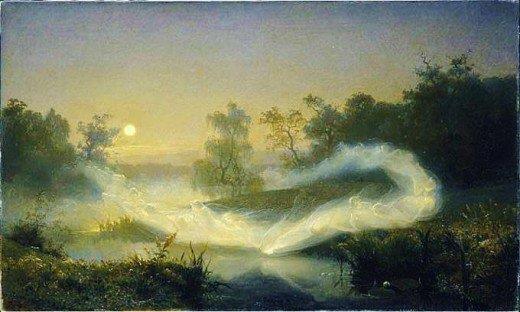
When Evans-Wentz visited Cornwall, he found a much reduced contemporary belief in faeries (usually termed pixies throughout Cornwall and Devon). Most of the stories he recounts are more evidently overlaid with storytelling tropes, and usually relate to an indefinite past. But he did hear from Miss Susan Gay of Falmouth, who articulates, what was then, a modern and novel metaphysical explanation of these entities derived from the ideas of the Theosophical Society, which had evidently made an impression on Miss Gay in the west of Cornwall:
“The pixies and fairies are little beings in the human form existing on the ‘astral plane’, who may be in the process of evolution; and, as such, I believe people have seen them. The ‘astral plane’ is not known to us now because our psychic faculty of perception has faded out by non-use, and this condition has been brought about by an almost exclusive development of the physical brain; but it is likely that the psychic faculty will develop again in its turn… It is my point of view that there is a basis of truth in the folk-lore. With its remnants of occult learning, magic, charms, and the like, folk-lore seems to be the remains of forgotten psychical facts, rather than history, as it is often called.”
In Brittany Evans-Wentz found that the belief in faeries was intimately woven in with the belief of the spirits of the dead, most commonly termed Corrigans in Breton:
“Like the fairies in Britain and Ireland, the Corrigans and the Cornish pixies find their favourite amusement in the circular dance. When the moon is clear and bright they gather for their frolic near menhirs, and dolmens, and tumuli, and at cross-roads, or even in the open country; and they never miss an opportunity of enticing a mortal passing by to join them. If he happens to be a good-natured man and enters their sport heartily, they treat him quite as a companion, and may even do him some good turn; but if he is not agreeable they will make him dance until he falls down exhausted, and should he commit some act thoroughly displeasing to them he will meet their certain revenge.”
The association of prehistoric sites and faerie activity in Brittany is taken fully on-board by Evans-Wentz, and he highlights the myriad of faerie folklore surrounding Carnac, location of a potent prehistoric landscape of stone rows and burial chambers, as evidence for a mutated ancestor worship; a preservation of deep-seated spiritual beliefs manifesting in the faerie folktales. Especially interesting is the testimony from Madame Marie Ezanno, who lived in Carnac and relayed several narratives of the local corrigans. Note the mention of mushrooms (an implicit reference to the method of seeing the corrigans?), the ritualistic silence during the dance, and the belief that they lived under prehistoric burial mounds:
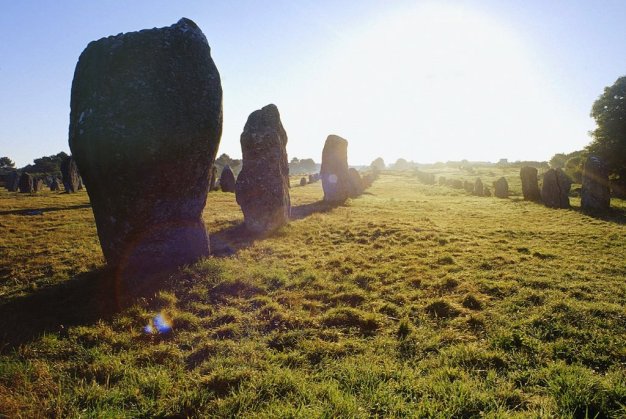
“They whistled in order to assemble. Where they danced mushrooms grew; and it was necessary to maintain silence so as not to interrupt them in their dance. They were often very brutal towards a man who fell under their power, and if they had a grudge against him they would make him submit to the greatest tortures. The peasants believed strongly in the corrigans, because they thus saw them and heard them. The corrigans dressed in very coarse white linen cloth. They were mischievous spirits (espirits follets), who lived under dolmens.’
Less than half of The Fairy Faith in Celtic Countries is taken up with testimonies. For the remainder Evans-Wentz applies the anthropology of his day in an attempt to explain the specific ethnology of Celtic faeries. He does this through an examination of the written faerie-lore, and then an assessment of the prevalent learned opinions on the reasons for belief in faeries, and the origins for these beliefs. These interpretations run the gamut, and although some of the archaic anthropological terms uses by Evans-Wentz can be disconcerting, he takes us through the main ideas about how the faerie faith was originated and propagated:
- The faeries are a folk memory of a pre-Celtic race, who lived in liminal environmental areas. This might explain faerie motifs such as kidnapping babies and replacing them with their own changelings. Evans-Wentz suggests that the continuation of changeling-type stories represents the depth of this Celtic folk memory, and retained its power even when the faeries had become non-human spirits.
- The faeries are dwindled gods, and their stories are corrupted vestiges of Pagan nature worship rituals.
- The faeries are fallen angels, trapped on earth after the Fall.
- The faeries are the spirits of the dead. Especially in Brittany, but also throughout the Celtic countries, this was probably the commonest belief of the rural people who told and disseminated the stories.
- The faeries are simply a different race of metaphysical beings, who interact with humanity on their own terms.
Sensibly, Evans-Wentz comes to the general conclusion that they are all right. But they only work as parts of a whole, where the entirety of faerie belief is constructed from a complex range of influences over large spans of time. And Evans-Wentz consistently emphasises the need to fully understand ‘visions’ of the faeries seen through second-sight or altered states of consciousness, and to incorporate them into any interpretation, because the majority of the stories he heard were either told by seers, about seers, or about someone in an altered state of consciousness. In conclusion he even goes as far as to say: “Fairyland exists as a supernormal state of consciousness into which men and women may enter temporarily in dreams, trances, or in various ecstatic conditions; or for an indefinite period at death.”
Evans-Wentz was well-versed in contemporary theosophist ideas about the true nature of reality, and the part the faeries had in it. Whilst he didn’t attempt to use theosophy to explain the faerie faith, he was open to their idea of using seers and mediums to connect with metaphysical entities, if their testament helped to explain the folklore and the reality of the faeries. Once he began his field research and encountered these seers and mystics first-hand, he became even more convinced that these people were (and had been for centuries) conveying legitimate information about the faeries by altering (purposely or not) their states of consciousness and interacting directly with a metaphysical environment.
But by the time Evans-Wentz made his tour of Celtic countries between 1907-11, both people with the second-sight, and the general belief in faeries was waning. By cataloguing rural stories, anecdotes and theories about the faeries, just before WWI tore apart many of the traditional ways of life, and by doing it in such an open-minded and empathetic manner, he has left us with a rare treasure mine of Celtic faerie data.
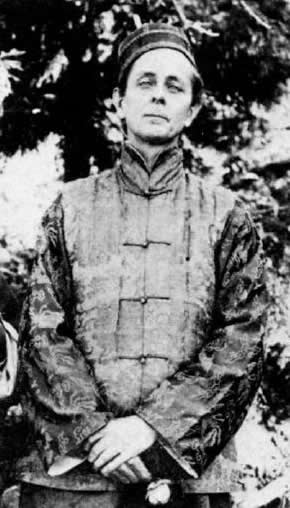
The Fairy Faith in Celtic Countries has been republished several times, but the full text can be viewed online through the Sacred Texts website: WY Evans-Wentz, The Fairy Faith in Celtic Countries
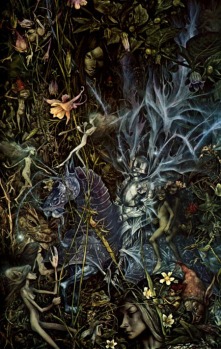
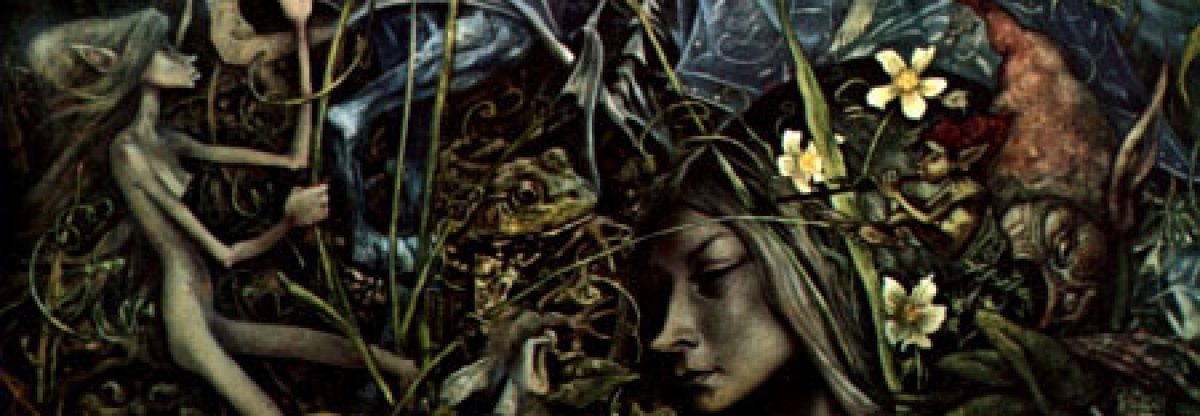

Awesome post! This book is on my to-read list.
LikeLiked by 1 person
Awesome Post loved the book
LikeLiked by 1 person